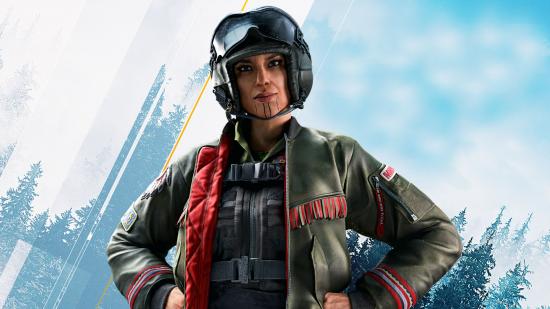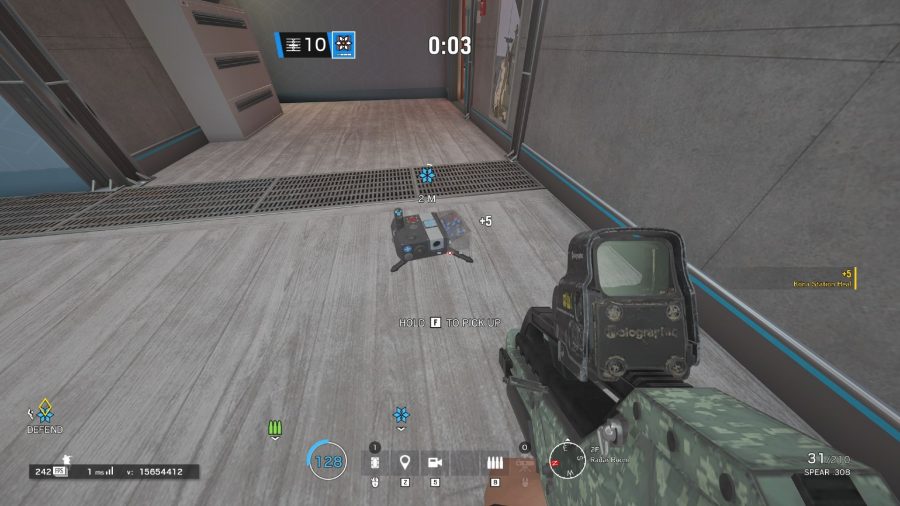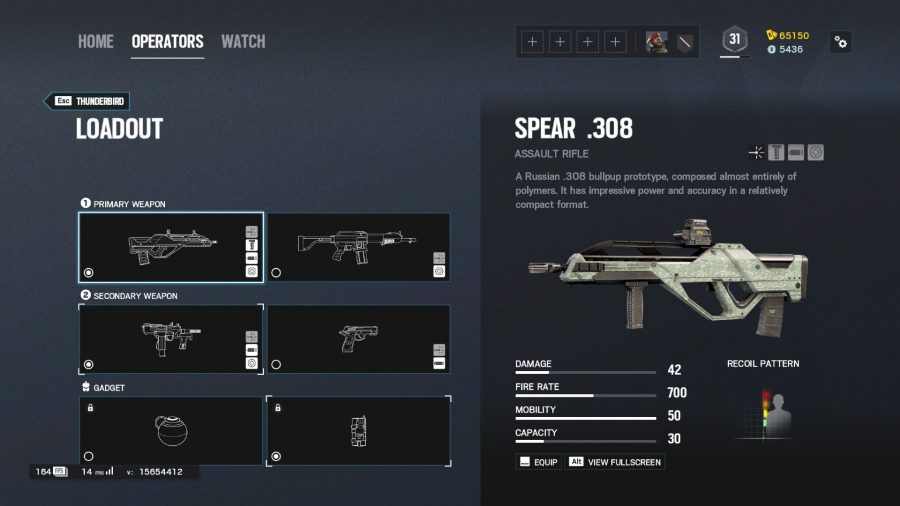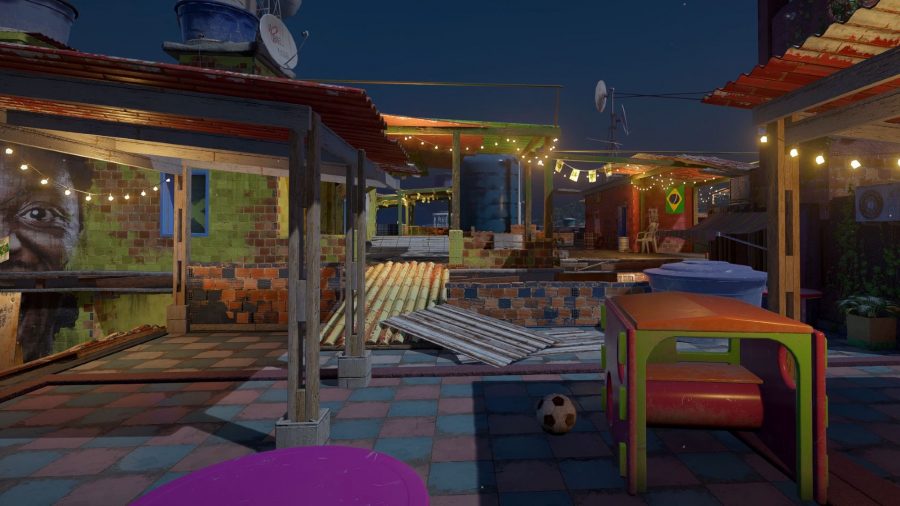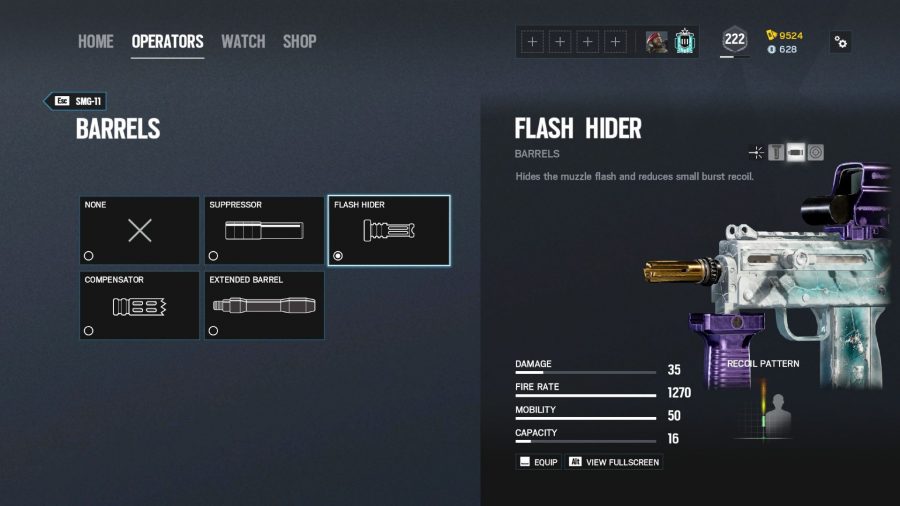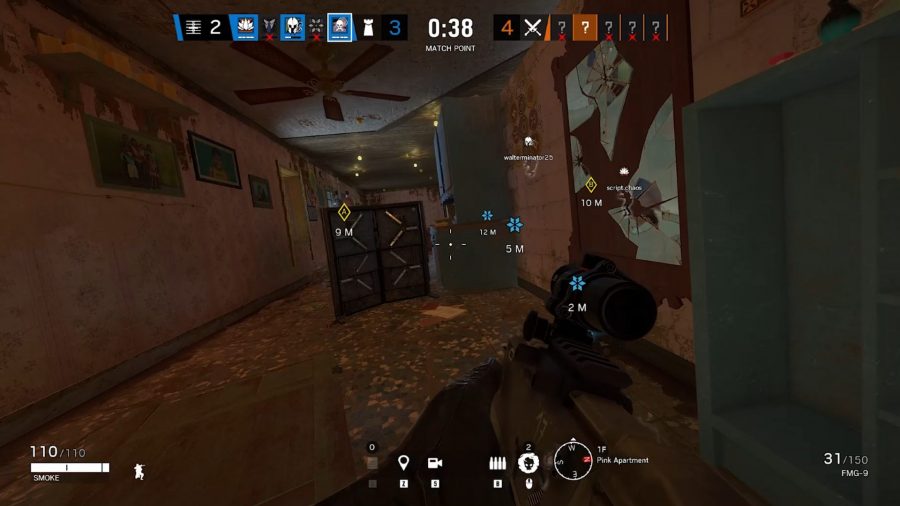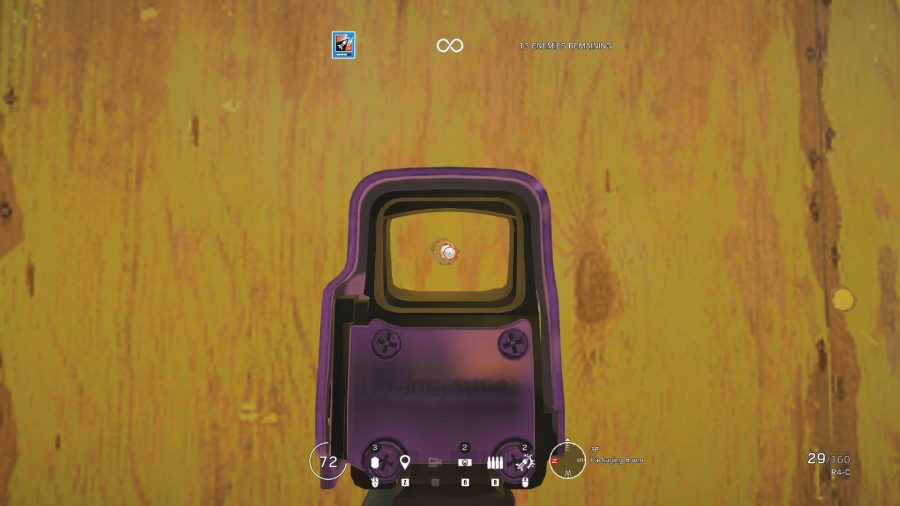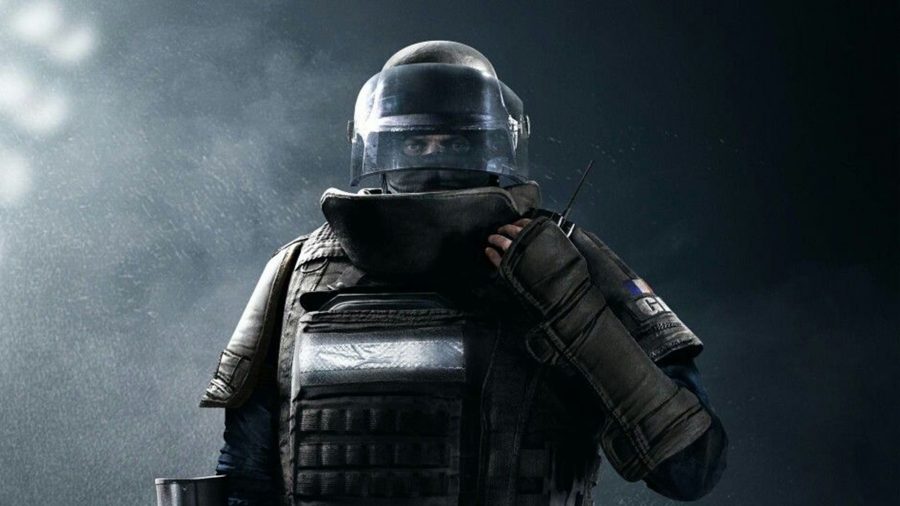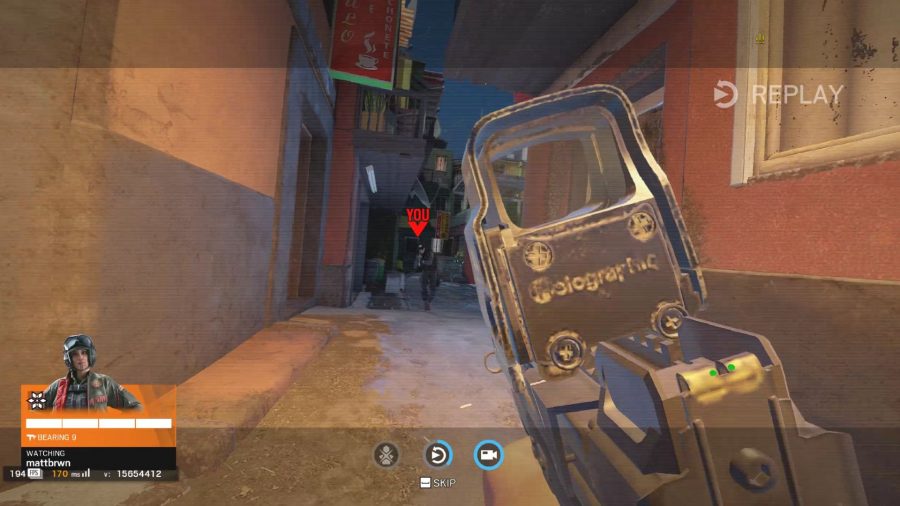Operation North Star continues Rainbow Six Siege’s newfound focus on quality of life changes, promising several reworks to core gameplay mechanics, while still adding a new operator and reworking a fan-favourite map.
Thunderbird is the name of the new operator joining the defensive lineup. Her ability is best described as a mix of Jäger’s ADS and Doc’s Stim Shot – she can place down three Kona Stations, which fire healing darts at any player who wanders into their area of effect. Despite coming from the Nakoda territories in Canada, Thunderbird arrives in Rainbow Six Siege alongside a rework to the Brazilian map, Favela. Importantly, the Favela rework isn’t designed to cater to competitive play – much like the House rework that arrived last year, this overhaul is aimed at the casual playerbase, making the map more balanced, but not necessarily viable for pro play.
Y6S2 also introduces a haul of changes that were teased during the Year 6 reveal earlier this year, including tweaks to the health and armour system, reduced downtime, and reworks to bulletproof cams, Mira, and Maestro.
So, let’s kick off with the new defender.
Thunderbird
Born in the Nakoda Territories of Saskatchewan, Thunderbird – or Mina Sky, if you want to use her civilian name – is the second defender with a healing-based gadget. She carries three Kona Stations, which can be placed on floors, walls, and solid surfaces much like Jäger’s ADS. Each Kona Station has a range of roughly two metres, and operates by firing a healing dart at the first operator to enter its area of effect. If multiple low health players are in the station’s area of effect then it will target the lowest health player. Each dart boosts the player’s HP by 30 and you can overheal by the same amount. After firing a stim, each Kona Station goes on cooldown, which lasts for 35 seconds.
Kona Stations can be shot out, tasered, or temporarily disabled by Thatcher’s EMPs, so they’ll need to be tucked away from view – they appear to require line of sight in order to deliver each healing shot so placement is key. Attackers can also use the Kona Station, so be wary of leaving them far away from the site. If you’re an attacking player you will see a cone of blue light to signal that there’s a healing shot available.
Much like Doc’s Stim Shots, a charge from the Kona Station can also revive a DBNO player, but they’ll have to crawl to the station themselves and manually interact with it. This should help out with general defender survivability, and can even be used to tank damage from Capitão’s Asphyxiating Bolts. Placing these in strong defensive positions, such as behind the half-wall on Border, could help high armour operators survive on onslaught of attacker utility. We’ve seen Doc used to support a Yellow Stairs hold on Consulate in competitive games, so it’s not entirely out of the question that this gadget could be used at all levels of the game, especially as it requires no input from Thunderbird herself.
As for Thunderbird’s loadout, she can equip either Caveira’s Spas-15 shotgun or Finka’s Spear .308 assault rifle as her primary, and choose between the SAT’s Bearing 9 machine pistol or the SDU’s Q-929 pistol as her secondary. The Bearing 9 is one of the best TTK guns in the game (and it’s getting a recoil buff this season too), and while the Spear .308 is lacking in the fire rate department, its damage per shot is impressive, so these would be our loadout picks. Finally, you can choose impact grenades or a nitro cell as Thunderbird’s secondary gadget – both are good for different reasons, so it’s really up to what your team needs.
So, how’s Thunderbird going to affect the meta? Naturally, it’s far too early to tell how viable she is at a competitive level, but there are early signs that she’ll overtake Doc as the best healer in the game. Like Jäger and Melusi, Thunderbird’s ability to place her gadgets and then run off and roam makes her a much easier operator to play and far less situational – being a three-speed helps, too. Of course, Thunderbird doesn’t have to be alive to influence a round, which also adds to her viability. Her kit is strong, too, and the nitro cell combined with her ability to roam freely makes her capable of denying plants late on.
Favela rework
This casual rework has very little in common with its original form, which is probably a good thing given how many exterior walls were totally destructible.
The new map is a lot more cohesive, with fewer ways to lock roaming defenders off from getting back to site, and much more secure site holds in general. Like the recent Border rework, there’s also a lot less clutter and detritus in this rework, leading to much cleaner lines of sight.
A couple of staircases now have a dumbwaiter in their centre, creating an interesting dynamic where you can flank players going up the stairs by hopping down the chute. It’s definitely more competitive now, but it’s far too early to tell if this map has a chance of making it to ranked or unranked playlists.
Barrel attachment changes
We didn’t expect this change, but it’s a very welcome one. Ubisoft is reworking the barrel attachments in the game so that they make sense now. Currently, it’s very difficult to discern exactly how a compensator differs from a flash hider, and certain players swear by using one or the other for specific weapons.
The rework to barrel attachments is largely targeted at the compensator and flash hider, with the former now only addressing horizontal recoil and the latter only helping with vertical recoil. High recoil guns like Ela’s Scorpion SMG are now a lot easier to use if you equip the compensator as there’s less side-to-side wobble when firing full-auto, however, you’ll have to work a bit harder to correct the vertical kick.
The muzzle brake will still help re-centre your aim faster, so is especially handy for DMRs. It’s still unclear if the extended barrel and suppressor will be changed, too.
Operator reworks
Melusi’s Banshee is about to get a lot less annoying. In Year 6 Season 2, the Banshee will open in the centre when you enter its area of effect, revealing a weak spot that attackers can shoot to destroy it. For defenders, this dramatically reduces the amount of warning time and intel that each Banshee can gather.
Mira and Maestro are also receiving nerfs to their gadgets. Now, if an attacker gets within melee range of an Evil Eye or Black Mirror they can melee the bulletproof glass, making it impossible to see through for both teams. Both operators still have ways to use their gadgets though – Mira can still shoot out the canister beneath the Black Mirror to create a new angle, and Maestro can still open the camera to gain intel or use the taser.
This change also affects bulletproof cams, which is a nerf, but they will eventually be buffed with a single EMP dart and the ability to fully rotate the camera – this rework will be in the upcoming test server.
Smoke is also getting a slight rework, which changes the way his toxic gas fills an area. The change will make his gas more like Capitão’s Asphyxiating Bolts, so you won’t be able to deny plants through walls any more. The VFX and SFX for the gas has also been tuned so that it’s a bit easier to see through and you can clearly see where its area of effect ends.
Bullet holes
Dying to a nigh-invisible bullet hole is one of the worst experiences in Rainbow Six Siege. In case you’ve been lucky enough to avoid this fate, it’s possible to shoot a single, low-calibre round into a soft surface and look through it until the silhouette of an enemy blocks out the light, giving you the perfect cue to open fire. Countering it requires a lot of drone work and intel, which isn’t always possible, and they lead to some very unfair engagements.
Ubisoft is now blocking these holes up so you can’t see through them. There will still be a mark to show the surface has been shot, but no see-through gap.
You’ll also still be able to create actual sightlines in soft surfaces by shattering panels with sustained fire, so this change won’t affect too much. Oh, and punch-sized holes are still viable, presumably because these can be spotted from a fair distance.
Disappearing corpses
Ever died because your enemy was hidden by a body that’s not visible on their screen in the replay? As corpses are client-side rather than server-side, there are a ton of inconsistencies when it comes to how each player sees their fallen comrades and enemies. As of Operation North Star, corpses will disappear shortly after death – in their place will be a small hologram of the deceased operator’s icon. This means that you can still glean vital intel about which operators are out of the game and where they died.
After a couple of hours testing this out I’m happy to report it’s a superb solution. My initial concern was that the icons would obscure vision, but they only appear with line of sight, are muted and transparent, and appear close to the floor rather than at crouch height.
Armour and health changes
Armour is dead, long live armour! The current armour system is based on damage modifiers, so a bullet that hits a three armour operator deals reduced damage.
This makes figuring out how many shots you are away from death pretty convoluted, especially when you factor in limb and wall penetration modifiers and damage drop-off. With the new armour and health system, armour (including picking up Rook’s armour) is represented as health, with the minimum starting health being 100.
With one armour you’ll have 100 HP, two will net you 110 HP, and you’ll have 125 HP if you start as an operator with an armour rating of three. Rook armour will grant each operator who takes it an additional 20 HP.
This isn’t technically a buff to Rook, but it’s hard to see any players leaving their plate behind before running off on roam when they can easily see the buff it grants. This change is definitely going to make life easier for new players, although it might make instant headshot deaths sting a little bit more when you’re a fully overhealed three-armour.
Finka change
The only attacking healer, Finka, is also getting a minor tweak. Instead of her Adrenal Surge providing temporary health buffs to all teammates, it will now function just like an ordinary heal. This should make her a lot more helpful as she’ll be able to bring a low health operator all the way back to full health over the course of a round.
New death replay system
When you die in Rainbow Six Siege you’re locked into a replay animation that barely shows where you were killed from and prevents you from hopping on cams to help the rest of your team out for a few seconds. Ubisoft is implementing a new death replay sequence that very quickly highlights who killed you and then shows you a replay from their perspective, but the key change is that you can immediately skip all the steps so that you can get on cams and help direct your comrades. This is really helpful in clutch situations or when you die near a teammate.
Test server changes
We already mentioned that the bulletproof cam rework is coming to the test server, but the highly anticipated ‘action after death’ changes are also on the next test server. This change allows players to continue using their deployed drones after death, which includes Zero, Echo, Maestro, and Mozzie. You can’t use another teammate’s gadget, although the EMP dart on the reworked bulletproof cam can be used by anyone on the team as it’s classed as a secondary gadget. Helpfully, if you’re a defender you can still tell which drones are being controlled by dead players as they’ll have protruding antennae.
Another small test server change is a drone-tracker, which counts the number of drones that have been destroyed so that the defending team knows roughly how much intel the attackers have left.
The test server is set to go live on May 25, 2021, which is a Tuesday.
The Rainbow Six Siege North Star release date isn’t too far off. In the meantime, check out our rundown of the best Rainbow Six Siege operators, or hit up our list of the best multiplayer games on PC if you’re looking for something to play before Thunderbird arrives.
